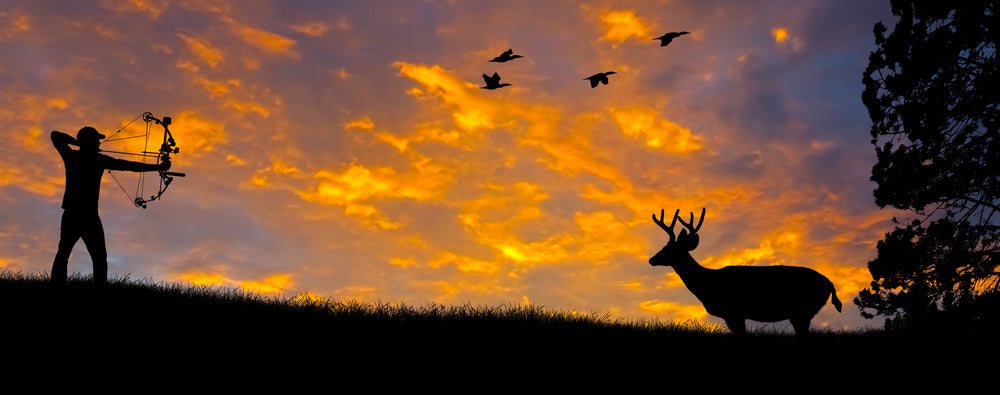Whether you're an experienced hunter or just a beginner, there are always ways to advance your bow hunting strategies and increase your success rates.
Here are 5 deer hunting tips to make you a big winner this hunting season!
1. Use the Right Equipment
Deer hunting with a bow requires top-notch equipment. To draw deer to your property, use attractants like deer feeders and scents. Use a high-quality, dependable bow, such as a crossbow or a compound bow.
Another excellent type of gear to use to better understand deer behavior are trail cameras. For newer hunters who are just learning how to hunt deer with a bow, cameras can prove especially useful. You can place these motion-detection cameras on trees and set them up near your deer feeders or other areas where the deer are frequently passing through, such as a deer trail or over a scrape. Trail cameras are a great way to find out where deer are bedding, when they move, and where they go.
2. Hunt During the Right Times
Deer are most active in the morning and evening, so those are the best times to go hunting. You also want to pay attention to the weather and the moon cycle. Weather fronts seem to really rouse the deer into action. When the weather is about to arrive, they usually start to feed heavily.
Deer typically get up and feed more vigorously when the moon is directly overhead and underfoot than when it is in other positions. When the moon is perfectly positioned at dawn or dusk, this is the perfect opportunity to bow hunt deer!
3. Choose the Right Location
Choosing your location when bow hunting deer is of the utmost importance. You should look for well-used trails between the food source and the deer’s bedding areas and then locate a tree 20-30 yards upwind of the trail, making sure that you have a good access route to your deer stand. Next, hang it between 15-25 feet high. Try to camouflage yourself in natural cover or foliage. Utilizing deer stand placement diagrams can also be helpful.
4. Utilize the Wind
Never ignore the significance of wind direction when deer hunting. A deer’s nose is its best line of defense from predators. By using the wind to your advantage, you can prevent your scent from blowing into their area.
To prevent them from sensing impending danger, position the wind so it is blowing away from where you think they will be moving, feeding, or bedding.
5. Be Patient
Hunting is frequently a waiting game and requires a lot of patience. Allow plenty of time for observation and waiting, and always be as quiet as possible. On some days, you might wait for hours and not see a single deer, while on other days, you might see several.
Now that you know how to hunt deer with a bow, it's time to start spotting more deer during the day and taking more shots. The Daytime Deadfall Feeder completely shuts down nighttime feeding and lures more deer to your area, giving you more chances to take the perfect shot.
Learn more about our Daytime Deadfall Deer Feeder at Tectonic USA!
